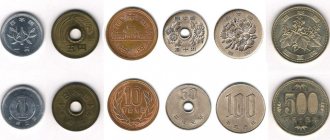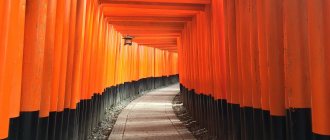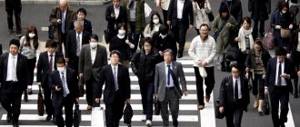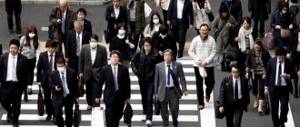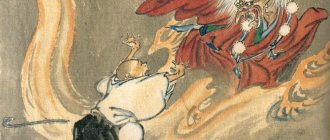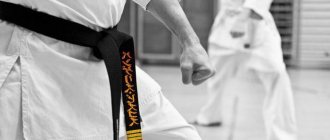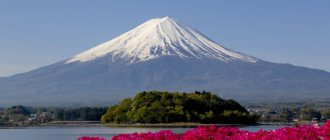In any country, even the most civilized one, there are criminals along with law-abiding citizens. Gradually they begin to unite, until over time the union of criminal elements turns into a real mafia. Illegal groups are engaged in trafficking in narcotic and psychotropic substances, weapons, living people and even their organs. Japan was no exception. In the Asian state, the mafia has long been operating, which comes from the ronin, or, in other words, the samurai nobles, who were once impoverished and took the wrong path. Its name is Yakuza. This is neither more nor less, one hundred and ten thousand criminals, which significantly exceeds the number of the American mafia (twenty thousand). And, of course, they have their own special history.
The beginning of the way
The history of the Yakuza as a mafia began in Japan. The name comes from a card game called “oycho-kabu”. This is a kind of version of the point game, where by adding up cards you need to get a certain number. The most unfortunate arrangement is considered to be a combination of eight, nine and three. In total they give 20, and according to the rules of the game this is 0 points. These numbers are pronounced “ya”, “ku”, “sa”, hence the name of the gang. In this situation, you need to have masterful skills to get out of an unfortunate situation.
The group, according to the most common version, originates from three societies.
Machi-yokko. As a result of the reduction of the samurai staff in the 17th century, about half a million fighters found themselves on the street. All they had was their combat experience and brutality. Having found no means of livelihood, many gradually began to organize their own criminal gangs. They attacked travelers, robbed cities and villages, and merchants. The police were poorly armed and not trained in combat; all they were able to do was pacify the raging drunkards. They had no chance to defeat professional soldiers. However, these samurai were not all the famous machi-yokko, they were the city guards. The people who decide to fight are city bullies, gamblers, petty criminals. And this was not surprising, because civilians would never take up arms. Their victories over the samurai were appreciated by the people, but over time, the machi-yokko themselves began to engage in criminal activities, not very different from the activities of their enemies - the former samurai.
Tekiya. Their story did not begin with such belligerence. Since ancient times, people have been wandering around Japan selling medicines, potions and all sorts of mystical nonsense. Initially they were called healers, over time they created their own business and began to be called tekiya, that is, peddlers. They began to trade with everyone, guided by the rule “If you don’t cheat, you won’t sell.” Their goods could not be called high-quality, and to prevent angry customers from harming them, they began to unite into large gangs. It is much more dangerous to make claims against a large group, and the robbers tried to avoid their shops. Within their ranks, a hierarchical system was developed that is used by modern Yakuza. Gradually, trying to increase their profits, the tekiyas themselves began to ensure order at bazaars and fairs. They took money from traders, caught and punished pickpockets, and collected so-called tribute.
Bakuto. They were organized by the government itself, and this soon turned out to be bad for them. The government began hiring gamblers to entertain workers working on government construction sites. The players beat the workers, and part of the workers' salaries was thus returned to the state treasury. But as was to be expected, those who agreed to beat honest workers began to commit crimes. Since the government needed them, they had to turn a blind eye to many things. It was the Bakuto who were the first to apply tattoos to the body. They tattooed the entire back, and this required special willpower, because the process took a whole hundred hours. The ritual of cutting off the phalanges of the fingers for an offense was also invented by the Bakuto. The name “Yakuza” also came from them, because it was the gamblers who knew the intricacies of the game oycho kabu.
Colombian drug cartels
Region:
Colombia
Areas of activity:
illegal drug trade
Hot Colombian guys
How it all began
In the mid-70s, Colombian drug dealers realized that “it’s fun to walk through the open spaces together,” and began to create cartels one after another. As a result, they first created serious competition and then completely expelled Cuban drug dealers from the American market.
Perhaps nowhere else is there as much money floating around as there is here. Everyone knows Pablo Escobar, who earned billions of dollars through his dirty work and once burned two million (!) dollars to keep his children warm and cook food.
He was also one of the founders of the most famous Medellin cartel (1976 - 1993), named after Escobar’s hometown. Illegal drug trafficking, money laundering, extortion, kidnapping, murder, racketeering - this is an incomplete list of glorious cases.
Exemplary family man (no)
The organization operated for 17 years both in Colombia itself and in neighboring Peru, Bolivia, Honduras, the USA, Canada and even in Europe. In addition to Escobar, the cartel was run by three Ochoa-Vazquez brothers: Jorge Luis, Juan Davila and Fabio. None other than D'Artagnan and the Three Musketeers!
Three acrobat brothers
Separately, it is worth mentioning their exceptional arrogance and fearlessness in relation to the authorities: on April 30, 1984, a car carrying the Minister of Justice of Colombia, Rodrigo Lara Bonilla, was shot up. It was he who made a decisive contribution to Escobar being expelled from the Colombian Congress and leaving his political career forever. This was the beginning of the terror. Escobar even organized a group of militants - Los Extraditables. Its members were engaged in attacking police officers, officials and, in general, anyone who interfered with the matter. Any action was carried out in response to the US extradition of the head of the mafia.
The terror reached its climax in 1989, when a Supreme Court judge was killed in August, a police colonel in September, and newspaper director Guillermo Cano Isaza in December on Escobar's personal order.
And in August of the same year, presidential candidate Luis Carlos Galan was killed, who promised to put an end to the drug cartels if he won.
In November, Escobar's militants planted an explosive device on a plane, killing all 107 people on the plane. Cesar Gaviria Trujillo, the successor of the murdered candidate, narrowly escaped death because, for an unknown reason, he canceled his flight.
The Cali drug cartel (1977–1998) is the second largest cartel in Colombia, which did the same thing as Medellin and constantly fought with him because of it. It was also founded by brothers - Gilberto Rodriguez and Jose Miguel Orejuela, as well as Jose Santacruz Londoño. The elite were not poor and well-educated people and initially called themselves “Gentlemen of Cali.”
Structure
The cartel was headed by a leader, his deputies on various issues and heads of “departments”, each with their own tasks:
- coca cultivation;
- cocaine production;
- transportation of goods;
- foreign transactions;
- logistics and accounting;
- providing protection for the cartel;
- organization of combat and punitive detachments, etc.
The lower level of drug cartels is structured somewhat differently. Here cells and the principle of mutual responsibility are combined with each other. As part of one cell, there are either blood relatives, or residents of the same village or town, performing a single function - only production, only transportation, or only extraction of information. The cells have no connection with each other (this gives a strong increase in the security of operations), and the leader of the cell has access to the cartel boss.
All this made it possible to implement Adam Smith’s principle of division of labor and employees receiving specialization plus safety. If the security forces infiltrate one of their own into one of the cells, he will not know anything more than what is happening in it.
Now about mutual responsibility: the entire cell is responsible for one member. If a cell member is sentenced to death, all members of his family go with him to the next world. Hence the conclusion - those who betray the cartel always knew about the consequences.
Fight against drug cartels
Back in 1984, the Colombian government began a holy war against the Medellin drug cartel. As already mentioned, large-scale terror followed in response. Members of the Cali drug cartel sided with the government in this fight. Of course - a great chance to destroy malicious competitors with the wrong hands.
With their funding, the Los Pepes organization was created, i.e. "Pursuing Pablo Escobar." She destroyed up to 300 Escobar supporters in the early 90s, which caused serious damage.
By the mid-nineties, the so-called cocaine war ended with the superiority of the security forces. In 1993, Escobar was shot, and after this the entire Medellin cartel was liquidated.
His place was taken by Cali, who took over 90% of the world cocaine market and has billions of dollars in turnover. They not only did not fight the state, but generously donated money to politicians and police officers.
However, the state was serious and the cartel could not stand its ground.
Handcuffed: the right ending for the bandits
In the summer of 1995, all the bosses were arrested. Documents linking Cali to the Colombian government have been declassified. A Miami court accused the Orejuela brothers of transporting two hundred tons of cocaine through the United States and gave each 30 years in prison. The verdict followed only when the defendants fully admitted their guilt. At this point, Kali ended his criminal activities.
Famous leaders
The first leader of the gang is considered to be Banzuyin Chobei, who was originally a samurai. Tebei began his path as a yakuza from a gambling den. Gradually he became rich and gained respect and influence. The authorities of the city of Edo, where he ran his business, invited him to hire workers to build roads and repair the city. He agreed, but instead of hired workers, he sent gambling debtors to construction sites. He took their wages for himself.
Another famous leader was Jirocho. He was the leader of a gang in the city of Shimizu in the 80s. He was particularly cruel, dividing the territory and cutting out competitors from the neighboring city. He is also responsible for stealing golden dolphins from the roof of an ancient castle.
Law-abiding bandits
The Yakuza mafia is engaged in criminal activities of various types: they organize the sale of girls to Europe, America and Eastern countries, run their own brothels, involve minors in prostitution, distribute prohibited pornography, engage in illegal emigration and racketeering. Of all the world's criminal gangs, they are the most organized and, no matter how paradoxical it may sound, they respect the law more than other groups.
The group is divided into 750 clans and, together with all their members, constitutes the largest mafia in terms of the number of bandits in the whole world. Their main enemy is Chinese criminal gangs. The Yakuza and the triad, in other words, the Chinese mafia, are fighting, this is a tribute to tradition. The Chinese and Japanese have considered each other rivals for centuries.
Japanese rulers and the entire government of the country as a whole throughout history have set control over their entire state as their main goal. It doesn’t matter in what exact ways it had to be done. And so it turned out that the authorities themselves were engaged in control over everything that lies in the legal sphere, including business activities, and the Japanese mafia exercised control over the illegal sphere of life in the Asian state. The mafia never quarreled with the authorities, and they, in turn, did not interfere with them.
Principles and Beliefs
The Japanese mafia presents itself as a knightly layer striving for the revival of traditions. The Yamaguchi-gumi organized the “Ninke Do” project, aimed at promoting the ideas of humanism, honor, and social obligations. The mafia promises youth protection, advises them to avoid drugs, and dreams of an impeccable, organized country. The group members vowed to fight for the well-being of the state. A website maintained by Yamaguchi-gumi is dedicated to the project.
The Ninke Do project aims to debunk the myth that organized crime is bad and harmful. The site reveals the humanistic, social ideas and objectives of the group, promotes the theory of community, and promotes the personal capabilities of each citizen. The Yamaguchi-gumi criticized the work of Shinzo Abe (Prime Minister) and petitioned for the revival of ancestral traditions and love of the motherland.
Many note that an unusual stage in the history of Japan has begun: bandits shout loudest about the infringement of human rights and love for humanity. It was they who were the first to come to the aid of earthquake victims in March 2011 and helped maintain peace in the country.
Politically, the Yakuza are ultra-right, demanding adherence to family values. Due to their beliefs, they cannot kill katags (people outside their group), although other criminal acts are permissible. Killing other criminals is ideologically acceptable.
The main thing for a gang member is personal honor. In borekudan, insults and insults are not tolerated; are not justified. It is unusual for them to admit a mistake. Young people are obliged to work for the benefit of the clan, and only older members have the right to think about themselves. If someone from the group goes to prison, the whole family comes to the rescue. Help of this kind, the willingness to take on the guilt of a group member, is a manifestation of valor.
Mafiosi present themselves as humanists
Hierarchy
The Japanese Yakuza built their internal organization according to the traditional structure of their country: “father - children”, “older children - younger children”. Among themselves, older and younger children are considered brothers, regardless of whether there is a blood connection between them or not. The head of the Yakuza bears the proud title of “oyabun”, translated into Russian this is the same as chief. He is considered the boss of all, the one who stands above all the gang members.
After the chief in the bandit hierarchy there are: senior adviser, head of headquarters, deputy and assistant chief. All these criminal elements command a whole series of other criminal elements. The more people they influence, the more influence and respect they have from others. All of them are the heirs of the leader, and in the event of his death, one of them takes his place of honor.
The hierarchy also includes advisers, secretaries, accountants, and consultants. The bandits themselves in their structure have senior commanders, they are also called younger brothers, junior foremen, who are called youths, from the simple ranks of the Yakuza.
Occasionally, independent units appear in Japan - lonely yakuza. These are criminals who do not want to join already formed clans. However, they do not achieve success, because all the territories have long been divided, and it is simply impossible to recapture them from the clan.
Another opinion
Newspaper "Panorama" (Italy), April 2002, article by Francesco Bigazzi:
“The Russian mafia is a reality. In Macau, the ex-KGB resident in this former Portuguese colony (with the rank of major) took over all the profits from racketeering and also founded a network of brothels where thousands of women from Russia and the former Soviet republics work. An old Soviet submarine used for transporting cocaine was found in Colombia, with all the ship's documents in Russian. She could transport 200 tons of cocaine at a time. The customers are Russian crime in the USA. The Russian mafia laundered $70 billion in banks on the small island of Nauru. The mafia positions are strongest in Spain, the Czech Republic, Australia, Bulgaria, Portugal and Turkey.” Interview with specialist James O. Finkenauer, author of the book “The Russian Mafia in America”:
— I believe that the Russian mafia does not like to shine. Yes, Interpol will not confirm its presence to you. Nevertheless, the amounts laundered in Western banks are gigantic, and in the United States many villas and companies already registered to fake owners belong to the Russian mafia. Racketeering, prostitution, drugs, weapons - all this has become “Russian business” in the West. Just because Russians don't appear in police reports doesn't mean the mafia doesn't exist at all. Your mafiosi are good at camouflage. A lot of beach villas in Spain have long belonged to mafia bosses of various levels from Russia. Do they go there just to relax? I don't believe. There was a huge amount of money in the accounts of the CPSU abroad. They disappeared. I doubt they were transferred back to Russia. It was with these dollars that the mafia was formed.
Clan views
The Yakuza group considers itself ultra-right in terms of politics. They advocate the idea of traditional Japanese values in families, want the policy of militarism to be returned, and strive to revive the samurai traditions forgotten by the people.
They like to portray themselves as defenders of all Japanese disadvantaged people. The Yamaguchi Gumi clan even provided their hometown with quite impressive financial assistance in 1995. The city needed it after the earthquake that occurred that same year. However, people have little faith in their good intentions, but their “blood money” was still accepted by the people. The Yamaguchi Gumi are considered the largest clan, their headquarters are located in a city called Koba.
The Yakuza divide all people into two categories: yakuza, that is, people from their circle, and katagi, which means “losers.” The last category includes those who do not belong to their mafia. Honoring traditions, the Katags do not kill, but violence, robbery and any other mockery of them is allowed. They can kill the “losers” only if they threaten them. The Japanese mafia allows you to kill each other. It happens that clans fight among themselves and even hire kamikaze killers.
All yakuza value their personal honor and the honor of the clan. They do not allow themselves to be humiliated, nor their clan brothers. It is not their style to admit their mistakes, because, in their opinion, they are simply not capable of doing anything wrong. Mutual assistance is key. If a brother is in trouble, the Yakuza will do everything to help him. Deviation from the rules is considered a great disgrace, and this is punishable by expulsion, cutting off the phalanges of the fingers, or death.
Yakuza structure.
During their creation, the yakuza adopted the traditional Japanese hierarchical structure of oyabun-kobun , where the kobun (子分, "foster child") is required to show loyalty to the oyabun (親分, "foster parent") . In a much later period, the "jingi" (仁義, code of "justice and duty") , which stated that loyalty and respect were a way of life. The oyabun-kobun relationship is cemented by the ceremonial exchange of a glass of sake. This ritual is not a feature of the yakuza world and is commonly found in a traditional Japanese Shinto wedding and may have been part of a twinning relationship. During World War II, the more traditional tekiya/bakuto declined as the entire population was mobilized to participate in the war effort, and society was under the watchful and strict eye of the military government.
However, after the war the Yakuza rose again. Supposedly, the yakuza have infiltrated every aspect of human life in Japan. The most romantic tales say that the Yakuza take in sons who have been abandoned or sent away by their parents. Many yakuza began their "professional" activities in middle or high school as street thugs or members of bōsōzoku gangs . Some Yakuza thugs are actually not very smart, if not mentally retarded, but they are accepted into clans because of their good physical fitness. Perhaps because they initially have a lower social status, yakuza often become burakumin and ethnic Koreans. Leaders of Yakuza clans are, as a rule, very cunning, tough and intelligent men, because... to rise to the top level of the yakuza hierarchy, one must be quite competitive and unscrupulous. Yakuza clans are headed by an oyabun or kumichō (組長, "head of the family") , who gives orders to his kobun subordinates. In this regard, the Yakuza organization is a peculiar variation of the traditional Japanese senpai-kohai . Yakuza gang members carry family relationships into clans in the sense that they treat each other like father or older/younger brothers.
In Yakuza clans, almost all members are men and there are very few women . However, if they do exist, they are usually called "o-nee-san" (お姉さん, "elder sister") . When the head of Yamaguchi-gumi in the late 90s. was killed, his wife, albeit for a short time, took over the reins of the family. The yakuza have a very complex structure: there is the most important boss of the syndicate - kumicho , immediately followed by saiko komon (最高顧問, “senior consultant”) , and after him so-honbucho (“so-honbucho”, “ chief of staff") .
At the next level of command is wakagashira , who controls several clans in the region, and the clan itself is controlled by shateigashira . The connections of each clan member are subordinated to a hierarchy (sakazuki): at the very top is the kumicho and controls the various saiko-komon, who in turn control their own subordinates in different districts or cities. The saiko-komon have their own subordinates, including junior bosses, consultants, accountants, etc. Those named by the oyabun are part of one large family and are ranked from younger to older brothers. At the same time, each kobun can act as an oyabun for a lower-ranking clan, which can also become the basis for the emergence of an even lower-ranking unit. The Yamaguchi-gumi, which controls approximately 2,500 firms and 500 yakuza clans, even has fifth-rank organizations.
Attitude towards women
There is a group of people who will never join the clan - women. The Yakuza do not trust the fairer sex; they believe that they have little courage, strength, or intelligence and that they should take care of their family and stay at home. Only the wives of the leaders are respected; they are called elder sisters. They are consulted, they are protected and they are always helped. All other women are referred to as “litters.” While the wives and daughters of the Yakuza may still not be bullied, those who are not in any way connected with the clan have a pretty hard time. They are treated more like a commodity, often subjected to violence.
Illegal business
As mentioned earlier, the yakuza in Japan and abroad engage in various types of activities. But what is noteworthy is that each clan is engaged only in its own specific business, and not in all industries at once. This does not depend on their personal choice; the history of the clan itself imposes a certain task on them. Almost all small and medium-ranking businessmen in Japan have encountered the mafia at least once. The Yakuza control the entire territory and those who begin to work on it.
The large Yakuza clan has long reached a high level and continues to take an active part in financial and political life. There they engage in so-called money laundering, invest in large business projects, collect debts, and even interfere in the work of shareholders’ meetings of large corporations.
They work closely with the Chinese and Koreans. This mainly concerns the drug business. Drugs are produced on Japanese territory, and through groups of representatives of other nations they are exported outside the country. This is a rather absurd cooperation, because the Japanese mafia is at war with the Chinese triad.
Marks of Excellence
For several centuries, tattoos have been used by mafia members around the world as a mark of a certain gang. From it you can understand which group a person belongs to and what position he occupies in it. The Yakuza did not deviate from traditions either. Tattoos in Japan have generally been associated exclusively with them for a long time. People who weren't in a gang didn't do them, while mafiosi covered their entire bodies with them. Hands, heads and even genitals were covered with drawings and inscriptions.
Sometimes ordinary artisans and peasants fell into the ranks of the Yakuza. In this case, tattoos were chosen to match the new name. Names usually sounded like "roaring storm", "steel sword", "lightning dragon". Today, tattooed people still continue to be associated with a dangerous gang. Some bathing places even prohibit entry for people with images and inscriptions on their bodies. This ban is not justified, since after the group was officially banned, its members do not so clearly seek to attract the attention of the police and ordinary citizens.
Despite the fact that the mafia is Japanese, you can also find Koreans in its ranks. Koreans make up only 0.5% of the country's population and are therefore subject to severe discrimination as minorities. Even Koreans born in Japan are generally considered foreigners simply because of their ethnicity. They cannot engage in legal trade, nor can they work without obtaining a work permit. It was precisely because society made them outcasts that the mafiosi began to accept them into their ranks. The Yakuza generally willingly accept all outcasts into their ranks. Offended by society, the country and the whole world, they acquire special anger and unwavering devotion to those who sheltered them.
All Koreans accepted into the ranks of the group are given a new name. To erase their belonging to another culture, special marks are applied to their bodies - tattoos with Japanese traditional symbols. They often have inscriptions in Japanese on their bodies.
Mexican Mafia – La Eme
Region:
USA, Mexico
Areas of activity:
drug trafficking, murder, arms trafficking, racketeering, extortion, gambling, witness intimidation
Black hand - symbol of the Mexican mafia
How it all started
La Eme is the founder of all Latin American (in particular Mexican in the USA). This is the first group that organized distribution channels, including drugs. The organized crime group also created a scheme in which supply is created in Central America for demand in the United States with delivery through Mexico. This scheme is still workable, no matter how the security forces fight it.
The known exact date of the founding of the gang is November 15, 1957 and the place is the Californian Deuel prison. 13 Mexicans, tired of being bullied by whites and blacks, created their own gang and called it La Eme, or the Mexican Mafia. It was led by Luis “Huero Buffalo” Flores.
Backbone of the gang: Flores in the upper left corner, Morgan in the upper right
Offended by the whole wide world, the Mexican guys began racially motivated murders in prisons and then could not even imagine that they would become the founders of the largest organized crime group in the United States and give rise to drug cartels led by barons, which would replace the armies and governments of states.
Flores begins to recruit his ranks of the most inveterate Mexicans to defend against abusers (both from guards and prisoners), as well as to take control of the sale of alcohol and drugs.
Unspeakable cruelty through violence and murder leads to the speedy achievement of these goals. Some of the gang members were released after some time and began to gather young members under their wing. The gang began to grow.
In the early 60s, violence in California prisons became so widespread that the leaders were transferred to San Quentin to decapitate the gang and cause its collapse. However, nothing came of it: one of the leaders, Rodolfo Cadena, killed a black American who approached him and kissed him, declaring him “the lady of his heart.” The murder took place in front of two thousand people, and not one of them was a witness.
The feared Rodolfo Alvarado Cadeno. Killed in 1972: stabbed 50 times
Joe "Wooden Leg" Morgan was a friend of Cadeno and also the boss of La Eme. He was a descendant of Croatian emigrants (see group photo above). In 1946, Morgan killed his girlfriend's husband and buried the body, was caught and escaped from the courthouse. The second time he was caught and sentenced to nine years in San Quentin. Released in 1955, he commits an armed raid, receives 17 thousand dollars and again ends up behind bars. In 1961, he runs through a tunnel he dug himself. He dug it with the help of plates, spoons and blades, which he stored in his prosthesis. Yes, by that time he had lost his leg. The “nobility” of the escape was that 11 more prisoners were released with Morgan.
Morgan's escapes naturally resulted in a life sentence in a maximum security prison, where he became closely acquainted with the Mexicans and, thanks to his connections to the drug business, quickly occupied the top position in the La Eme hierarchy. The wooden leg made a decisive contribution to the growth of the gang and to the distribution of financial flows among its members.
The most important factor was that Joe was white, which made it possible for La Eme to form an alliance with the Aryan Brotherhood of the United States and jointly oppose the Latino Nuestro Familia and the African American Black Guerrilla Family.
Structure
The hierarchy of La Eme is like the Sicilian Cosa Nostra. Here, too, there are “dons”, consigliere advisors, assistants, “soldiers”, as well as carnales (“meat”). The latter are members of an organized crime group who carry out the most dangerous and “dirty” assignments.
A new candidate for the gang is accepted on the recommendation of old members. But as soon as he does something wrong, the “mentor” will be obliged to kill him. Nothing good awaits informers, homosexuals, cowards, self-willed and boors in La Eme.
The organized crime group still adheres to a number of commandments: the group is higher than the family, not to betray its members to the authorities and in communicating with others.
Fighting La Eme
It's hard to believe, but law enforcement officers often side with the mafia, because sometimes they find themselves in a situation where they are forced to either work with bandits or get a bullet in the forehead.
Customs officers also like lavish gifts that turn a blind eye to smuggling.
In the late 90s, former military personnel who studied with American instructors were accepted into the ranks of the mafia. Over the course of 4 years, 100 (!!!) thousand soldiers and officers joined the ranks of the Mexican drug cartels. In the mafia environment they are called “sicarios” (two parts of the film of the same name with Benicio Del Toro were even made about this). Their orbit of activity includes collecting taxes, ensuring uninterrupted drug trafficking and destroying competitors.
La Eme and the Colombian drug cartels are the only organized crime groups in the world who have their own armies and actually rule the countries.
But not everything is so rosy: in the summer of 2011, the American government authorized the arrest of 127 border customs officers found to have ties to the Mexican mafia. It was found that one missed car loaded with cocaine brought profits of up to $1 million into their pockets.
One cannot help but say about ordinary citizens of Mexico, who are fed up with the state of affairs in the country. There is a famous case where residents seized a police station in Tierra Colorada and established people's power: 12 police officers and their chief were transferred to the Federal Police because they were involved in murders and connections with the mafia.
The difficulty of the struggle also lies in the fact that in the United States you can buy weapons at an expensive and legal (provided you are over 16 years old and have no criminal record), especially through dummies.
Special rituals
Like any clan with a long history, the Yakuza have their own special traditional rituals. The most striking of them include the following.
Atonement for guilt. Anyone in the clan can make a mistake. In this case, he is considered guilty, and, as is known, the guilt must be atoneed for. But you won’t get away with just apologies; for an offense you need to use a hammer to chop off a phalanx of fingers on your hand. The offender hands the severed part of his finger to the boss of the yakuza clan. This is a ritual that dates back to the times when it was necessary to wield a sword. With each lost phalanx, it was more difficult to control the sword; with the subsequent repetition of the ritual, wielding the sword could become completely impossible. Today, the absence of part of a finger is hidden by using a prosthesis for this purpose, so as not to give away one’s affiliation with the mafia.
Prison mark. In Russia, prisoners often put homemade tattoos on their bodies to serve their sentences in prisons; from them you can easily find out what the person was imprisoned for and how many years he spent in prison. Yakuza also make characteristic marks for themselves while in prison: for each year they insert one pearl under the skin of the penis. Men can demonstrate the years spent in prison in baths and saunas.
Admission to the ranks of the mafia. Before taking any significant place in the group, men are called “yakuza students” for a long time; this is the lowest level of the hierarchy; it is possible to reach the top of the entire criminal pyramid only by overcoming all its steps. The rite of passage for a student is the sakazukigoto ceremony. The recruit sits opposite one of the clan members (later this person will be called his adoptive father) and drinks sake with him. In Japanese culture, drinking the traditional drink is used to create a bond between people. The same ceremony is used during clan twinning.
Deadly punishment. Sometimes the misdeeds and misdeeds of a gang member are so great that cutting off a phalanx of fingers alone cannot be done. In this case, another ritual is used - seppika. In other words, this is a ritual suicide that the offender commits by cutting open his stomach. This is the same tribute to the traditions of the samurai, who took their own lives in the same way. Not a single yakuza can escape severe punishment, and this is not only due to his submission to the centuries-old tradition of the crime family. If he refuses, the gang members themselves cut open their brother’s stomach. Death punishment may follow if a member of the group betrays one of his brothers or fathers. According to tradition, once in the police, the Yakuza must take all the blame on himself, covering up his criminal gang; if he does otherwise, he will face certain death. Even the most severe torture, during which information was obtained about other members of the gang, will not become a mitigating circumstance in the punishment.
The life and gangster business of the Japanese mafia have become widespread in art. They can often be found as movie characters, sometimes anime. Members of the Yakuza clans are negative heroes who respect no one and at the same time honor and family-honoring modern samurai. They are found in such films as “Kill Bill”, “Brother of the Yakuza”, “The Fast and the Furious: Tokyo Drift”, “War”.
Cosa Nostra
Region:
Sicily, Italy and USA
Areas of activity:
drug trafficking, gambling, pimping, extortion, racketeering, arms trafficking, fraud, murder, usury
How different are these people from the shaven-headed guys in leather jackets and sweatpants!
How it all began
For many people, Cosa Nostra and Mafia are the same thing. There is no other organized crime group that has been so glorified, and even in such world cinema masterpieces as “The Godfather” and “Octopus”.
So, at the turn of the 19th–20th centuries. one and a half million Sicilians fled to the USA, which is almost 25% of the island's population! It is naive to assume that there were no representatives of the criminal world among them.
However, one should not assume that the Sicilian and American Cosa Nostra are twin sisters. Over time, the US mafia has greatly lost the features and traditions of gangsters from Sicily. Thus, the famous gangster Al Capone was harshly condemned by the Sicilians because of his lifestyle. It’s hard to be surprised by this, since he was already born into a family of emigrants and did not know the traditions of the Sicilian mafia.
Be that as it may, emigrants from Sicily brought criminal activities to America: underground gambling, pimping, drug and weapons trafficking, shadow financial transactions. This greatly contributed to the merging of criminals and power structures.
Influence
Cosa Nostra achieved its greatest influence in New York and Chicago: just remember scenes from films where regular mafiosi are shot at point-blank range with Thompson submachine guns! Yes, the mafia had competitors in these two American cities, but they did not have nearly such a rigid hierarchy and cohesion operating within an organization of mutual responsibility and support from the authorities as the Sicilians.
The mafia got involved in the underground sale of alcohol when it was officially banned in 1920: retail points of sale, bottling plants for alcoholic beverages were organized, and routes for transporting elite alcohol were established.
Al Capone and his gang entered into negotiations with the criminal underworld of New York so that all Italian criminal communities would unite into a single Cosa Nostra, as was the case in Sicily, and expand their activities through the sale of drugs.
This initiative of Capone was supported by Charles “Lucky” Luciano, one of the leaders of organized crime in the United States (by the way, one of the few gangsters who died of natural causes in 1962). As always happens in such cases, there was a conservative and an influential gangster in the person of Salvatore Maranzano, who was against such undertakings, for which he paid with his life.
Al Capone and Lucky Luciano
Structure
At the very top is the boss, who is also the “godfather” (padrino). He is chosen by a vote of the heads of the fighting groups (capo) belonging to one or another “family” (famiglia). Until the middle of the last century, election was carried out by voting of absolutely all capos, but this became impossible due to police raids. All members of the “family” report to Don on everything, and he, in turn, is obliged to know absolutely everything about the life of society.
Each boss has his own underling (sotto capo), appointed by him personally and serving as overseer of the capo's work. It is interesting that if the votes for the position of padrino are equally divided, it is the padrino who decides his fate with his vote. If the boss is killed or put under arrest, the henchman takes over his duties.
The Don also has a “consigliere” under his direct subordination, also his assistant, but not in charge of the affairs of the group, but performing the function of an adviser. It often happens that the “consigliere” has a completely legal occupation, for example, he works as a lawyer and defends members of the “family” in court.
Also on the shoulders of the consigliere lies the responsibility of an arbitrator in disputes between bosses and in communications with the authorities. He interacts with representatives of the law (bribing police officers and judges). Traditionally, he has high authority in the family and enjoys the unlimited trust of his boss.
In the structure of the “family” there are several gangs under the command of the caporegime, who are subordinate to the henchman or personally to the boss. Under the command of each of them there are from 8 to 10 “soldiers” (regime), and they are engaged in controlling various criminal activities.
The capo is nominated by a henchman, and approved by the don himself, who also has the right to independently nominate his people for this position.
“Soldiers” enter the community on the recommendation of their capo. But before that, they prove their usefulness to the common cause and their devotion.
Below the “soldiers” in the hierarchy are the so-called “accomplices” (novicio) - they distribute drugs, sell weapons, and carry out small assignments.
In the Cosa Nostra hierarchy there is another “position” - capo di capi - head of heads or “boss of bosses”. The last person to officially hold such a position in the United States was Salvatore Maranzano, described above.
Meanwhile, such a strict hierarchy is more typical for the Italo-Sicilian version. In America, Cosa Nostra now accepts people who do not have Italian roots.
Fighting Cosa Nostra
The “Law of Omerta,” also known as the law of mutual responsibility, makes it very difficult to investigate mafia crimes. It's simple: this “document” condemns to death any member of the community who dares to reveal secrets to the police. The worst thing is that death awaits his relatives too.
Thanks to this, in Italy, for example, it becomes unrealistic to convict a person, because this necessarily requires the testimony of another person.
However, the gangsters become caught up in the law when the "families" fight each other.
In 1984, Tomazzo Buscetta, the first mafioso to break omerta, became an informant (pentito) in the witness protection program in Italy. His motive was that representatives of other “families” killed many of his relatives.
He worked with judges Paolo Borsellino and Giovanni Falcone, and this helped them achieve success in the fight against organized crime groups, but did not save their lives - both were killed by the mafia as a result of explosions.
Thanks to Buscetta's testimony, over a hundred gangsters were put behind bars.
Buscetta accompanied by officers of the law
In the United States, American authorities began to seriously deal with the mafia only in the mid-70s of the last century, when raids, arrests of leaders, and the introduction of informants began. This has borne fruit: today it is far from the same organized crime group that terrified the residents of New York or Chicago and dictated its will to other representatives of the criminal world.
It is stupid to talk about the end of the Italian mafia in the USA and Sicily: it has simply legalized business to a large extent, got involved in politics and does not behave as boldly as before.
Official ban
For many years, the Japanese mafia existed without prohibition. It was only in 1992 that the country's government adopted an act to prevent their activities. The definition of a criminal group, which was previously absent in legislative acts, was defined, and a ban on the racketeering that the Yakuza trade in was introduced. There was a wave of discontent among the gang members themselves and their families. The daughters and wives of the yakuzda took to the streets of Tokyo to demonstrate their protest. Today this has resulted in the fact that they try to keep tattooed people in suits from entering public places. Many bathhouses, beaches, and restaurants are closed to them.
In the 1990s, the Yakuza mafia suffered a much stronger blow. The Japanese crisis began, which continues to this day. As a result of this, the business of the gangs began to gradually collapse, and the number of gang members began to decrease. But their system is not doomed to failure. As long as there are illegal businesses, there will be yakuzas. They try to pass themselves off as businessmen, while using their own criminal jargon, buying shares of world companies and even participating in the country’s politics. They are found on all Japanese islands and even outside their own country.
But people are gradually starting to fight back. Just recently, the manager of a restaurant in Japan filed a lawsuit against Kenichi Shinoda himself, the head of the largest Yakuza clan, Yamaguchi Gumi. She stated that it was the leader who should be held responsible for all the bandits of his clan, who extorted money from her and even threatened to destroy her entire business. This woman’s action can be looked at from different angles. On the one hand, this is a little reckless, because, most likely, after such a statement, the Yakuza mafia will declare real war on her. On the other hand, she showed courage by suing one of the most dangerous people in the world.
Gurentai: Yakuza after 1945.
As Japan entered the era of urbanization and industrialization, a third yakuza group emerged, called the "gurentai" (愚連隊) , a name that predates the outbreak of World War II. Whether the gurentai fall under the traditional concept of yakuza or not is still a matter of debate, but they undoubtedly gave rise to a of yakuza groups , which were called "bōryokudan" - "power groups" . In short, the Gurentai are a gang of undisciplined young thugs who stage power “shows” for money. Those. they fight for those who will pay the most. They often participated in the struggles of trade unions and other workers' organizations, which placed them much closer to the traditional Japanese underground power structures. As Japan militarized, some of them came to represent the militant wing of Japanese politics known as uyoku (右翼, "right wing") , or ultra-nationalists.
Unlike the more traditional yakuza, the uyoku did not establish their influence over any territory - they committed violence solely for political purposes. The most famous uyoku group before World War II was the Kokuryū-kai (黒龍会) - “Black Dragon Society” . The Kokuryu-kai was a secret ultra-nationalist umbrella organization (such an organization supports several other organizations working in a certain area; or such an organization is representative of an association (union) of these organizations and has its own name), whose members included many government officials and military officers, as well as many martial artists and members of the Japanese underground involved in political terrorism and assassination. Members of the Kokuryu-kai also provided espionage services for the Japanese authorities and engaged in smuggling activities, including the trade in Chinese opium, prostitution, and overseas gambling, all of which provided the Kokuryu-kai with both money and information. they began to control major seaports and the entertainment industry.
The largest Yakuza umbrella group was the Yamaguchi-gumi , which appeared in the Kansai region and owned a large entertainment industry in Osaka and equally large seaports in Kobe. The US occupation forces tried to fight the Yamaguchi-gumi and other groups, but in vain, eventually admitting defeat in 1950. Gradually, the Yakuza began to use firearms and began to look more and more like classic Western gangsters.
At this stage, both tekiya and bakuto were not limited to their traditional fields of activity and expanded into any area they found profitable. The Gurentai at the same time began to assume the traditional roles of tekiya and bakuto, which eventually led to a clash between all three major yakuza groups and a struggle for power and prestige. In the 1960s Yoshio Kodama, an ex-nationalist, began to negotiate with various factions, the first of which were the Yamaguchi-gumi led by Kazuo Taoka, the Tosei-kai led by Hisayuki Machii ) and ultimately with Inagawa-kai. Clashes between individual gangs, however, continued.

